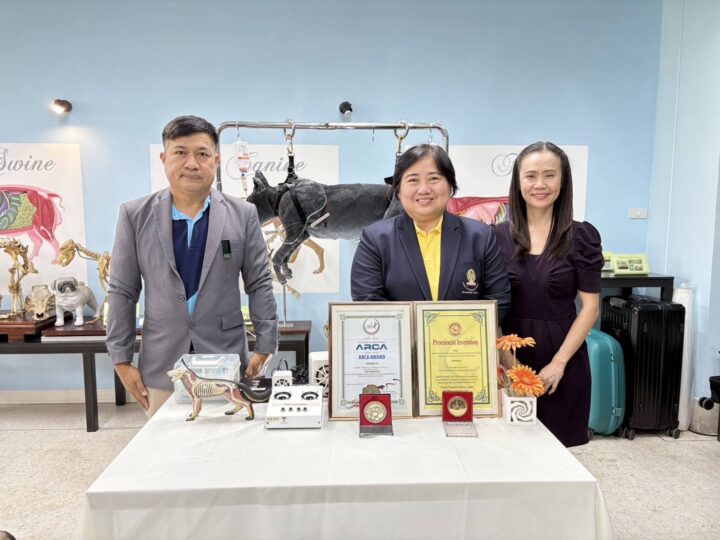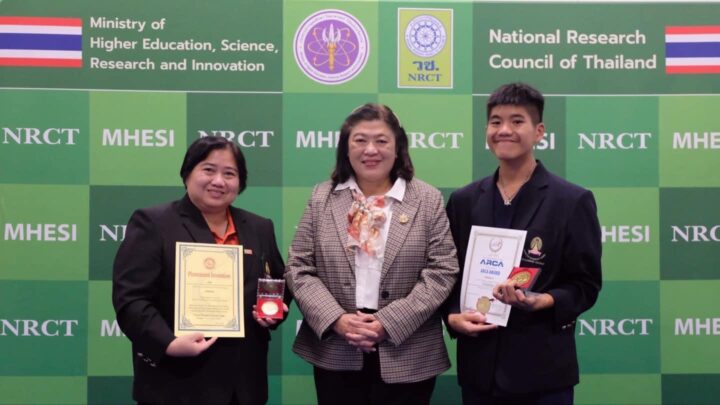Newswise — The innovation, “Interactive Self-Learning Canine Blood Draw and Injection Training Model Made from Waste Materials,” created by Assistant Professor Dr. Pawana Chuesiri, Mr. Pakdee Sudthanom, Mrs. Jantima Intarapanya from the Faculty of Veterinary Science, Chulalongkorn University, and Mr. Krittayach Chuesiri, a student at Chulalongkorn University Demonstration School, was awarded a Gold Medal and Certificates from the Republic of China (Taiwan) and Croatia at the international innovation event “International Trade Fair – Ideas, Inventions and New Products (iENA 2024)” held from October 24-31, 2024, in Nuremberg, Germany.


Mr. Krittayach Chuesiri, Student, Chulalongkorn University Demonstration School (right)
This innovation was one of 18 projects representing Thailand and the only entry from Chulalongkorn University selected by the National Research Council of Thailand (NRCT) to participate and showcase at this event under the Teaching and Research, Pedagogical Items category.
The Interactive Canine Blood Draw and Injection Model aids in understanding precise injection and blood-draw locations, offering a teaching tool that can be applied in clinical practice. It helps build confidence and proficiency, reducing the risk of injury and stress for dogs, while significantly lowering production costs compared to imported models.
Designed to closely resemble a real dog in a four-legged standing position, the model provides clear internal and external anatomical features for veterinary learning. It comprises four main components:
- The model with a simulated blood flow system
- A signal detection box
- An audio narration box
- A blood draw and injection equipment
The model includes embedded silicone tubes as blood vessels and sensors made from soda cans to detect signals. It has detachable body parts and limbs, with a special fabric skin that mimics real dog fur, complete with zippers and Velcro for easy assembly and disassembly to study internal anatomy. For self-learning, if an injection is incorrect, an LED light on the signal detection box changes color, and a barking sound is triggered.
The production process involves creating a prototype using a dog model preserved in formalin along with waste materials like plastic bottle caps, foam, and special silicone to create the model. The aim is to incorporate this model into veterinary training at Chulalongkorn University and potentially produce it for future sale. The model also has plans for use in veterinary skill labs, clinics, or animal hospitals. This sustainable alternative reduces the need for animal testing, is durable and reusable, helping to conserve natural resources and minimize hazardous waste and environmental impact.
MEDIA CONTACT
Register for reporter access to contact detailsCITATIONS
International Trade Fair – Ideas, Inventions and New Products (iENA 2024)


